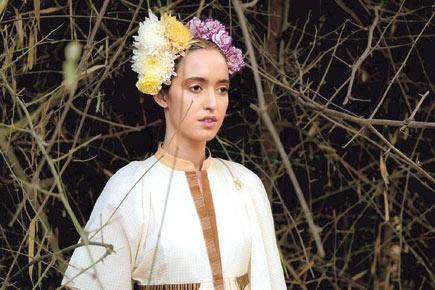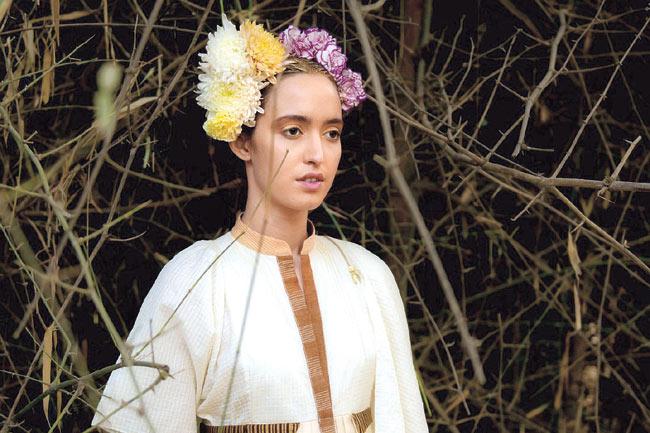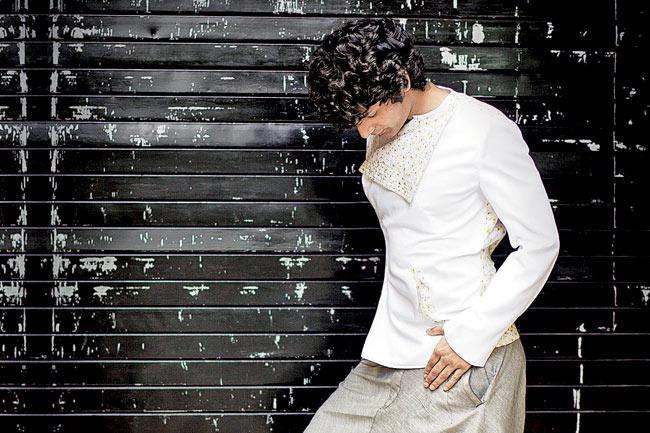To celebrate Indian textiles, the upcoming Lakme Fashion Week will see five textile designers showcase their lines. We attempt to understand the economics and logic behind such decisions

India is a treasure trove of textiles with diverse patterns, colours and fabrics that change every few square km. The vibrancy of our country’s culture is brought to the fore by the purveyors of our unique textiles and techniques that range from Paithani in Maharashtra to Jamdani in West Bengal and Phulkari in Punjab to Ikat in Andhra Pradesh.
ADVERTISEMENT

Bringing forth the flavour of Meghalaya, designer Sidharth Sinha has created a line using Dakmanda, handwoven cotton fabric used extensively in the state
However, with the turn of the century came the Western influences and new technologies that gradually, and sadly, ate into the popularity of our seamless heritage. While few Indian designers including Ritu Kumar, Abraham and Thakore, Krishna Mehta and Abu Jani-Sandeep Khosla have been showcasing our traditional riches, this season’s edition of the Lakmé Fashion Week (LFW) will present new faces on the block.
This high-profile platform has, for a few years now, attempted to highlight the relevance of Indian textiles, by dedicating an entire day from the five-day event to it; however, this year the fashion spectacle will witness lines by five textile designers. Works by Anavila Sindhu Misra (Mumbai), Karishma Shahani Khan (Pune), Lalit Sengar (Ghaziabad), Sidharth Sinha (Delhi) and Suket Dhir (Delhi) will take to the ramp.

Designer Anavila Sidhu Misra’s works will bring forward techniques like hand-blocking, applique, batik and jamdani, extensively done on linen
Let’s talk money
But, does this focus make business sense, considering that each piece takes months to complete largely due to the painstaking effort by weavers? “At the moment, the demand is very less. People, obviously, are aware of a variety of Indian textiles but they don’t value it. In fact, it is strange that internationally, our textiles are favoured more. Out there, people don’t come across handwoven and handcrafted fabrics, and embroideries, so they really value it, and are willing to pay the price it deserves,” Sidharth Sinha reveals, candidly. Thankfully, he is hopeful that the buzz generated in the last few years and increased involvement from Indian designers might help increase demand in India with time.
Sinha’s marketing arm, Nathaniel Rynjah, elaborates that from point of view of sale, the demand in India is next to zero. “There are very few stores that stock garments where the sole focus is on Indian textiles and techniques. Also, handcrafted pieces take a long time to create; each piece takes months depending on the intricacy involved. Hence, it is slightly more expensive than other products. But people don’t understand this increase in cost,” he maintains.

A design from Lalit Sengar’s collection focussed on Chanderi, an old weaving technique of producing finely textured silk and cotton fabrics embellished with zari work
What is the solution?
Rynjah feels that one of the remedies to bridge the gap between consumers and suppliers is to educate them about the processes and the hard work that goes into the creation of every garment.
Karishma Shahani Khan echoes Rynjah’s thoughts, and has found a way to do this, already. The young designer’s garments always carry a small note that explains the background of every piece. “This creates awareness and even the consumer is not in any state of ambiguity resulting from lack of knowledge about the process,” she explains. She told us though that the bottom line is that dealing in garments made from Indian textiles doesn’t result in earning huge profits, it’s passion that drives her.
However, transforming this passion into reality isn’t a cakewalk. Working with weavers in far-off villages and trying to make them understand new trends is not a mean feat.
Lalit Sengar spells out the process, “Being an Indian designer with such a vast exposure of Indian textiles, I find myself overwhelmed at times with options to choose from while designing a line. Since it’s not streamlined and the weavers are not so approachable, it ends up being a little more expensive than just buying the fabric from the market and designing a clothing line.”
He goes on to explain how finding a weaver is never an issue but working with them on a particular theme or collection remains the challenge. “Besides, there are so many middle men in this process that sometimes even the weavers don’t wish to work with us directly. They prefer us coming to them through these middle men. We need to work on a business model where the weavers can work and earn profit from their craft without any mediation.”
The Lakmé Fashion Week will take place between March 12 to 16 in Mumbai.
 Subscribe today by clicking the link and stay updated with the latest news!" Click here!
Subscribe today by clicking the link and stay updated with the latest news!" Click here!







